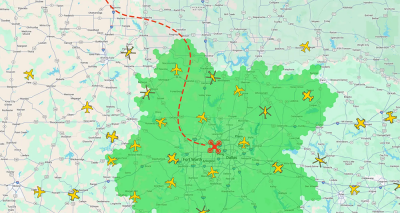The last 12 months have seen a huge shift in perception of the drone industry, propelled in part by the Covid-19 crisis. The expansion of trial beyond-visual-line-of-sight (BVLOS) operations across the globe have demonstrated that the technology is there, as well as the need, and that commercial operations are ready to move to the next level.
BVLOS drones are already improving the public safety, economics and feasibility of many use-cases, helping to drive uptake. One of the major challenges, however, is obtaining reliable command and control connectivity that is required for operation. In many situations, cellular is the most appropriate choice.
There are still limitations in the regulatory field, although this is making some headway. For example, the Federal Aviation Authority’s ruling on Remote ID and the EU regulation on drone registration will help to alleviate fears about unlawful or irresponsible drone use. But to fully operationalize, an environment that allows seamless and secure connectivity is needed.
Experts from the drone industry agree. As BVLOS flights using cellular command and control are increasing, the limitations around data sharing need to be addressed. To achieve scale in this area there is a need for data exchange. Cellular connections provide this data exchange capability, adding an essential layer of security to the flight that is needed for safe operations.
The question of where is it safe to fly BVLOS drones can be answered by the Mobile Network Operators (MNOs) as Jonathan Evans, founder of Skyward and non-executive Policy Director at AirborneRF explains:
“I need to know where and when and how I can trust that signal if you’re going to attach an aircraft to it or navigate aircraft with an airspace in a way that will avoid colliding with another aircraft. But the response from the MNO side is actually on pitch. They have already developed a whole table of those standards for latency, throughput, reliability of signal, range. They have an equally deep and rich engineering culture and system, but completely separate.”
To bring the two together, a system is required to sufficiently bridge the communication gap and provide a solution that satisfies the requirements of both aviation and cellular operators. This is where the value of communication platforms like AirborneRF is evident:
“A drone has to have permanent connectivity to a cellular network so that it can communicate with the flight management systems. AirborneRF software integrates with the cellular network operators so that they can provide the required information to the aviation management systems.
Existing 4G network technology already provides all the ingredients for reliable, off-the-shelf communication for profitable BVLOS drone operations. The upcoming transition to 5G will only solidify this, as 5G networks have been specified for ultra-reliable low latency operation. In other words, Mobile Network Operators have a clear path to provide effective communication for critical airspace safety.”
Thomas Neubauer, Head of Innovation and Business Development at TEOCO
Nothing demonstrates the importance of cellular connectivity more than the Global UTM Association and the GSM Association signing a collaborative agreement, which began in 2019. In 2020, the collaboration launched the Aerial Connectivity Joint Activity (ACJA) initiative, the purpose of which is to share knowledge and develop standards that provide valuable input for Standards Development Organizations (SDOs). The ACJA initiative has already published its first document, the LTE Aerial profile, identifying a minimum mandatory set of features which are defined in 3GPP specifications.
Cellular solutions not only answer safety concerns, they also offer added value services that regular drone operations require such as weather sensors, charging stations and safe emergency landing locations. These services can be co-located with mobile infrastructure, for example on rooftops, in secure areas or alongside existing infrastructure in rural areas, to make drone operations more straightforward.
The operationalisation of commercial BVLOS flights is very near but it is clear that secure and reliable cellular connectivity is required to expand low-altitude drone operations and to enable effective BVLOS missions. The question, then, is can these two well-established communities find a way to complement each other’s needs and open up the sky for drone services, at scale?
















Comments